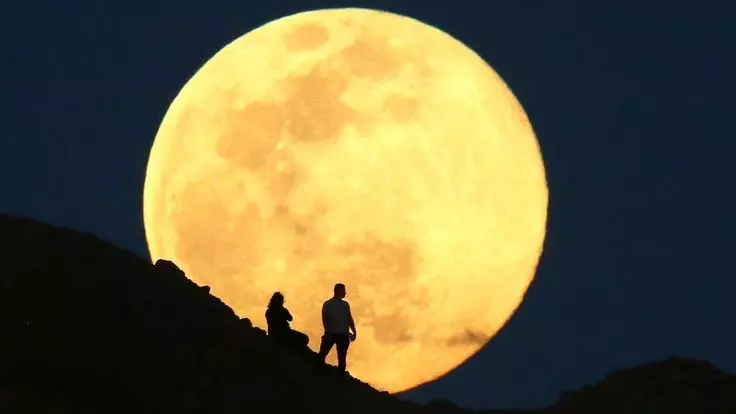
First of two Supermoons in August to be visible tonight; Here’s when to watch
text_fieldsThe first of the two full supermoons in the month of August will be visible tonight while the second will be witnessed at the end of the month, on 30 August.
The supermoon is a phenomenon that happens when the full moon appears slightly bigger and brighter because it is nearer or closer to Earth in its orbit. The term supermoon was coined in 1979.
Today, the distance will be closer than usual which is just 222,159 miles (357,530 kilometres) away.
The moon's orbit is not a perfect circle, its distance from Earth changes during its cycle. When the moon is at its closest point to Earth (perigee), it is about 48,280 km closer compared to its farthest point (apogee).
The technical term for a supermoon is ‘perigee-syzygy of the Earth-Moon-Sun system’. In astronomy, ‘syzygy’ means a straight-line configuration of three celestial bodies. Another name for a supermoon is ‘perigee full moon’.
After 2018, this is the first time we are having two full supermoons in the same month, and it will not happen again until 2037, according to Time and Date. On Tuesday (August 1), the supermoon was only 357,530 kilometres from Earth and it was called as ‘sturgeon moon’.
The first supermoon of 2023 was in July, and the last one for 2023 will occur in September.
The second supermoon of the month will occur on August 30, but it might not be visible in India as it will reach its peak at 7.05 am. It will be called a blue moon as it would be the second full moon occurring in the same month and the distance during this time will be closer which is 222,043 miles (357,344 kilometres).
In India, people can witness the supermoon at its peak at 12.02 am on August 2. To watch the Supermoon, the weather should not be cloudy.
A location must be identified wherein an unrestricted view of the supermoon can be seen during the stipulated time. One can always use binoculars and telescopes to have a better look at the supermoon.
There will be 13 supermoons this year. After the two supermoons in August, including a blue moon, which will be the closest to Earth this year, the series will conclude on September 29.























